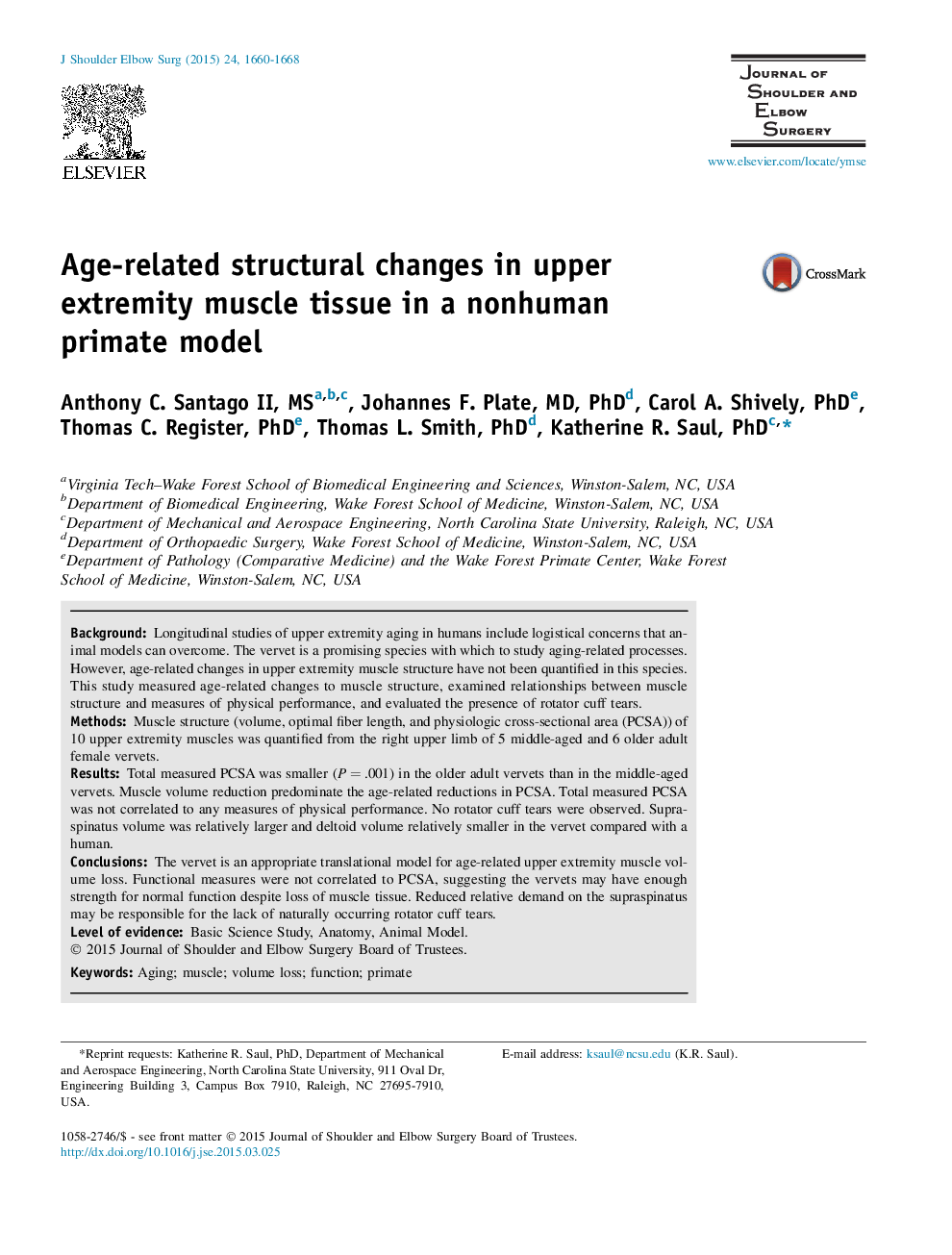| Article ID | Journal | Published Year | Pages | File Type |
|---|---|---|---|---|
| 6211026 | Journal of Shoulder and Elbow Surgery | 2015 | 9 Pages |
BackgroundLongitudinal studies of upper extremity aging in humans include logistical concerns that animal models can overcome. The vervet is a promising species with which to study aging-related processes. However, age-related changes in upper extremity muscle structure have not been quantified in this species. This study measured age-related changes to muscle structure, examined relationships between muscle structure and measures of physical performance, and evaluated the presence of rotator cuff tears.MethodsMuscle structure (volume, optimal fiber length, and physiologic cross-sectional area (PCSA)) of 10 upper extremity muscles was quantified from the right upper limb of 5 middle-aged and 6 older adult female vervets.ResultsTotal measured PCSA was smaller (PÂ =Â .001) in the older adult vervets than in the middle-aged vervets. Muscle volume reduction predominate the age-related reductions in PCSA. Total measured PCSA was not correlated to any measures of physical performance. No rotator cuff tears were observed. Supraspinatus volume was relatively larger and deltoid volume relatively smaller in the vervet compared with a human.ConclusionsThe vervet is an appropriate translational model for age-related upper extremity muscle volume loss. Functional measures were not correlated to PCSA, suggesting the vervets may have enough strength for normal function despite loss of muscle tissue. Reduced relative demand on the supraspinatus may be responsible for the lack of naturally occurring rotator cuff tears.
